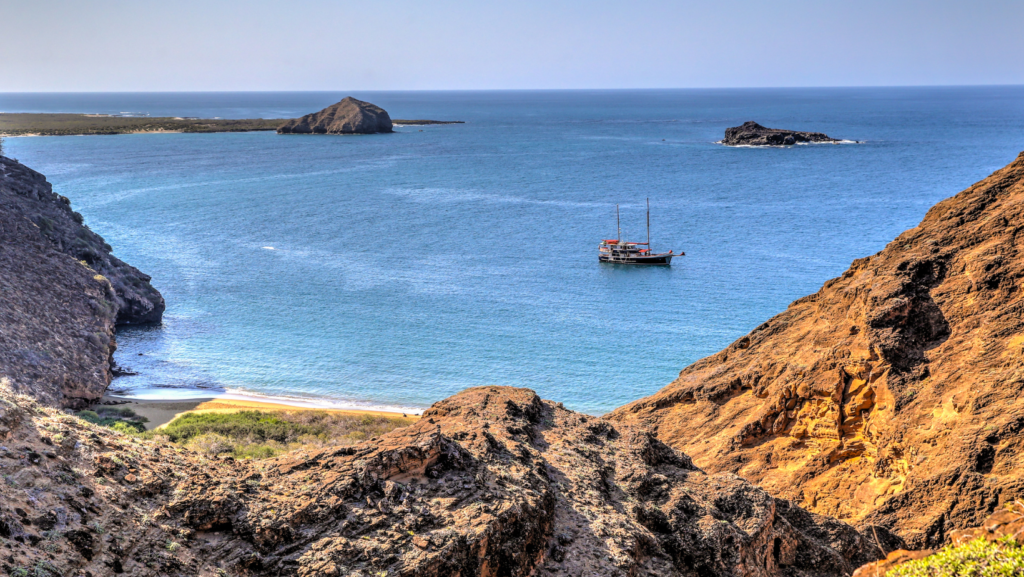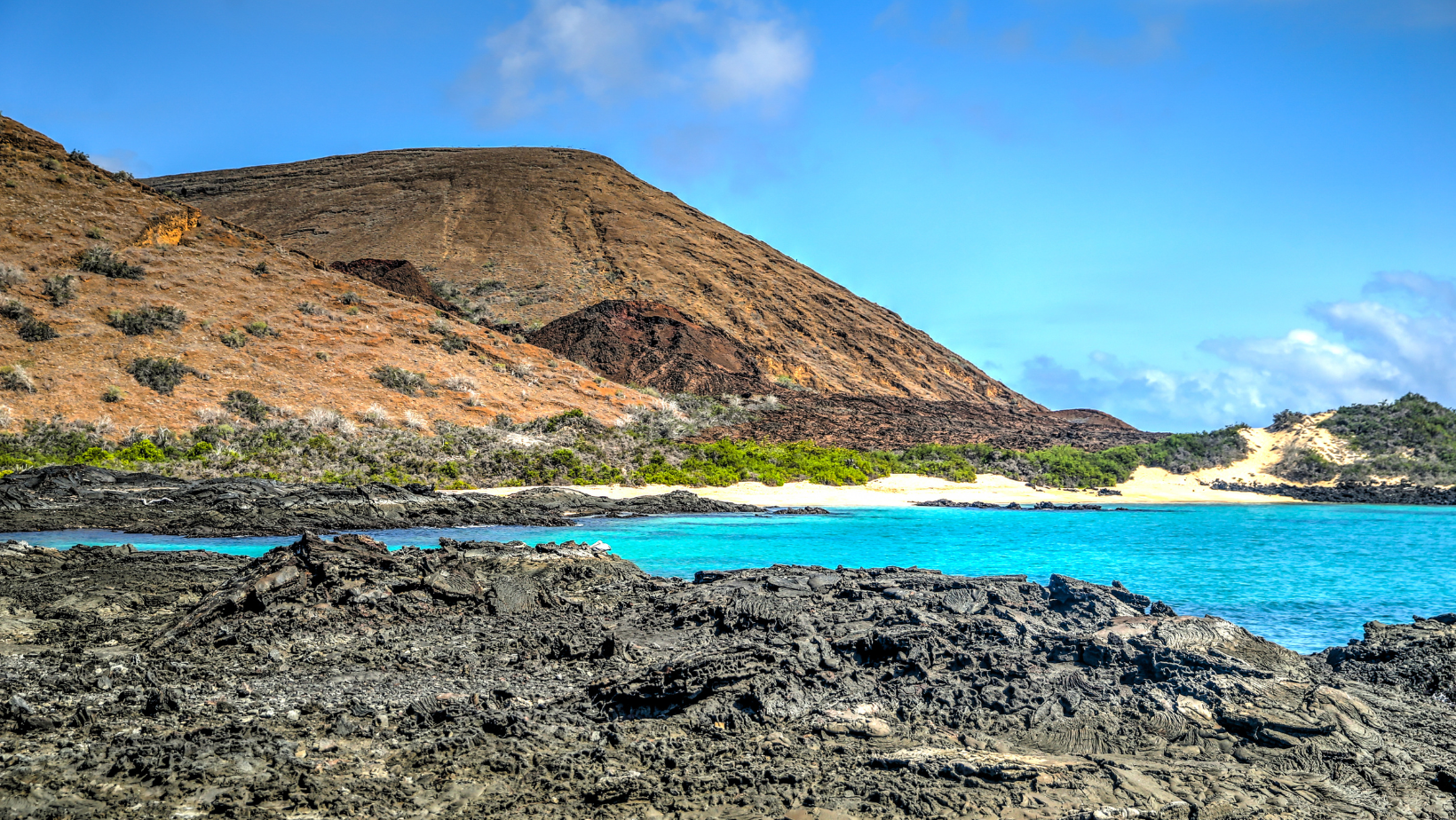
Sullivan Bay is located on the east part of Santiago Island and presents a great geologic interest. The area is cover in lava flows which makes it a very spectacular place to visit. Here, you can enjoy the marine wildlife of the Galapagos while snorkeling. Sullivan Bay is one of the most beautiful places in the Galapagos to snorkel with its crystal clear waters!
Visiting Sullivan Bay is often combined with visiting Bartolome Island, as the areas are close to each other. This place can be visited on a naturalist cruise or on a day trip from Santa Cruz.
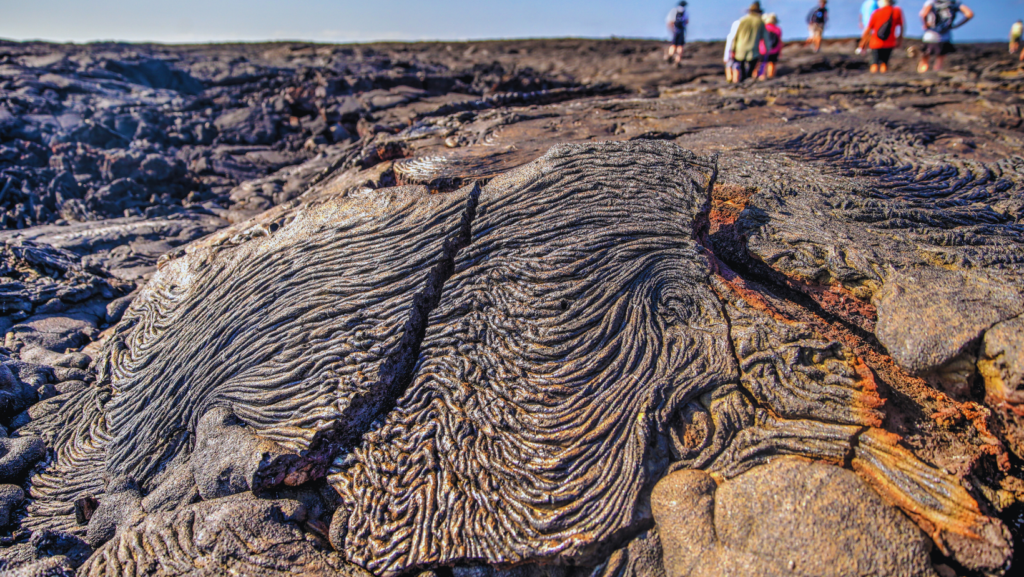
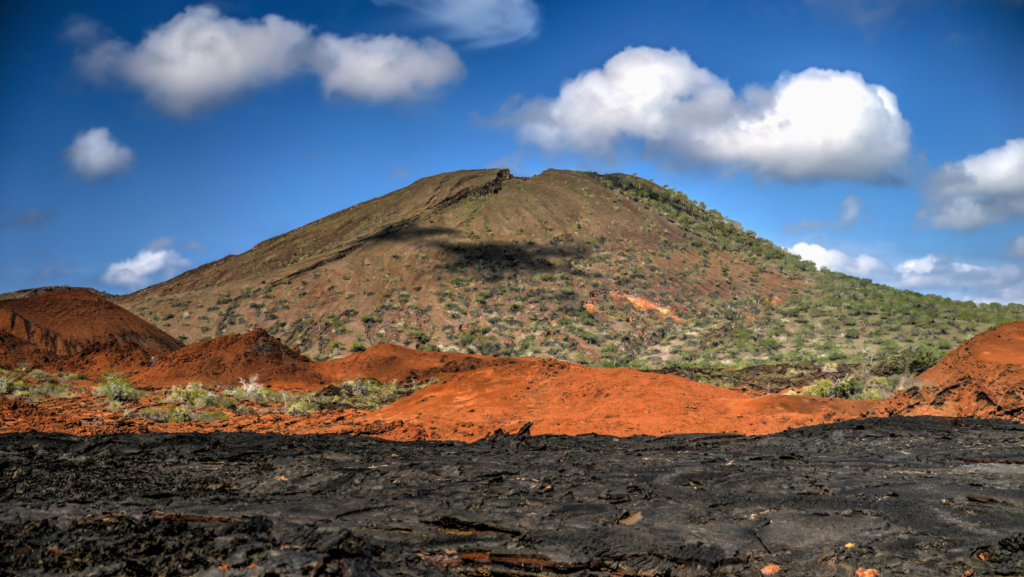

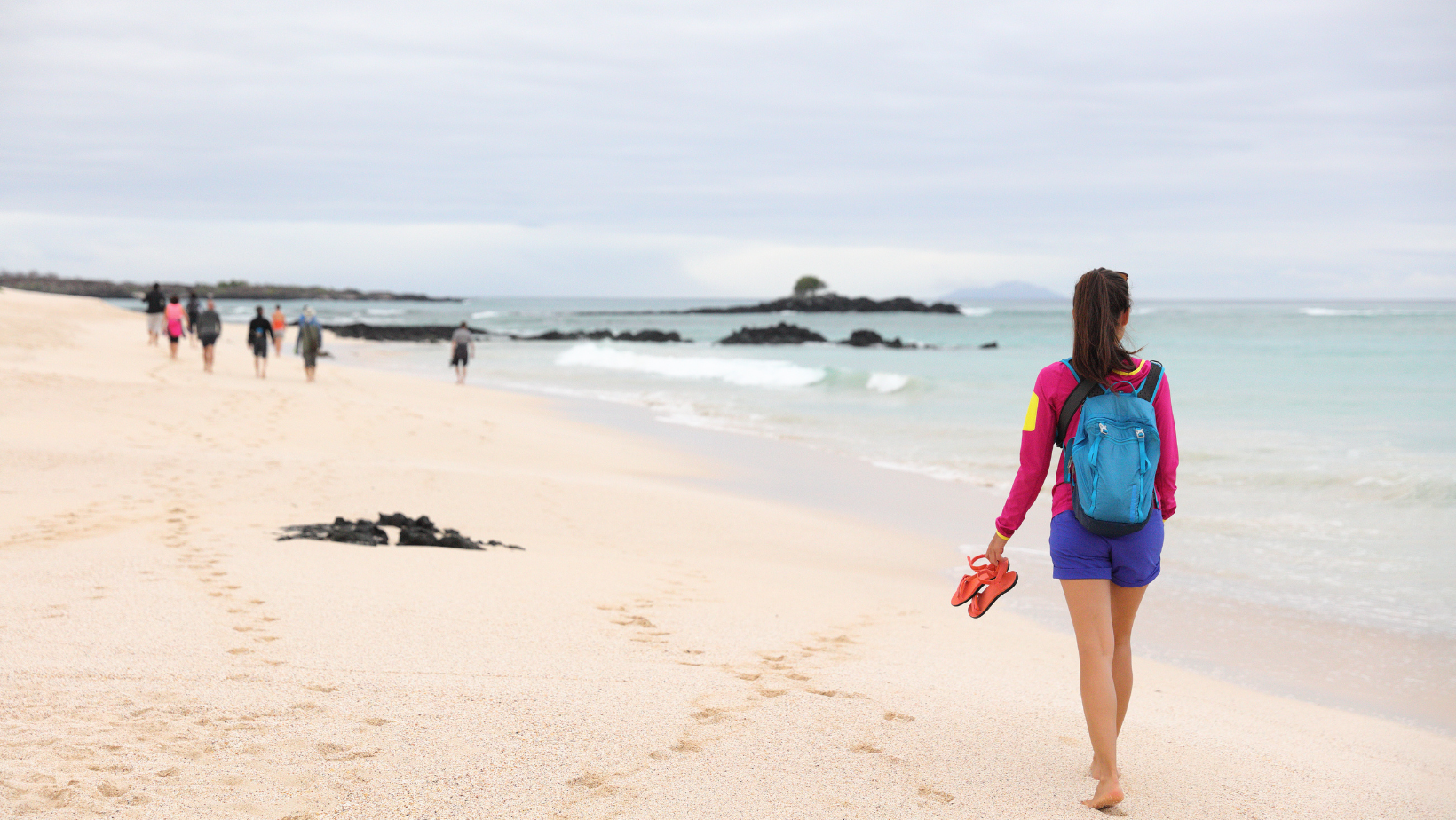
Located on the north of Santa Cruz Island, it is possible to snorkeling or take a relaxing walk on the beach. It is recommended to disembark barefoot and wear light walking shoes. Here you will find a lovely beach, ideal for swimming, with a lagoon behind and a longer beach ideal for walking and spotting wildlife. The saltwater lagoon behind the beach is often home to large blue herons and small birds. Large and small beaches are nesting areas for green sea turtles. While snorkeling, you can see many types of colorful reef fish and various rays, among other marine species.
This beach is accessible via a daily excursion from Santa Cruz or in some naturalist cruise itineraries.
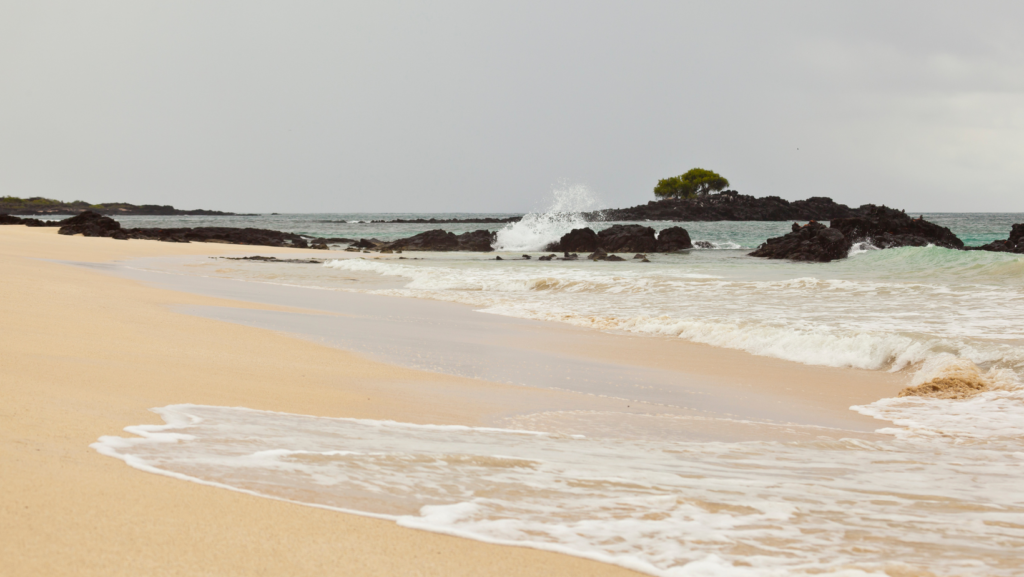
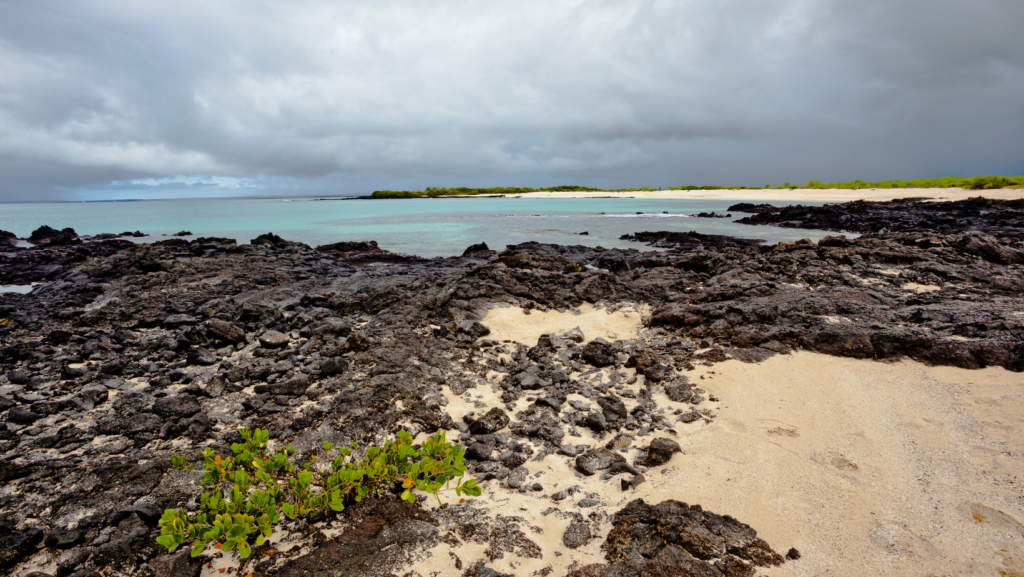
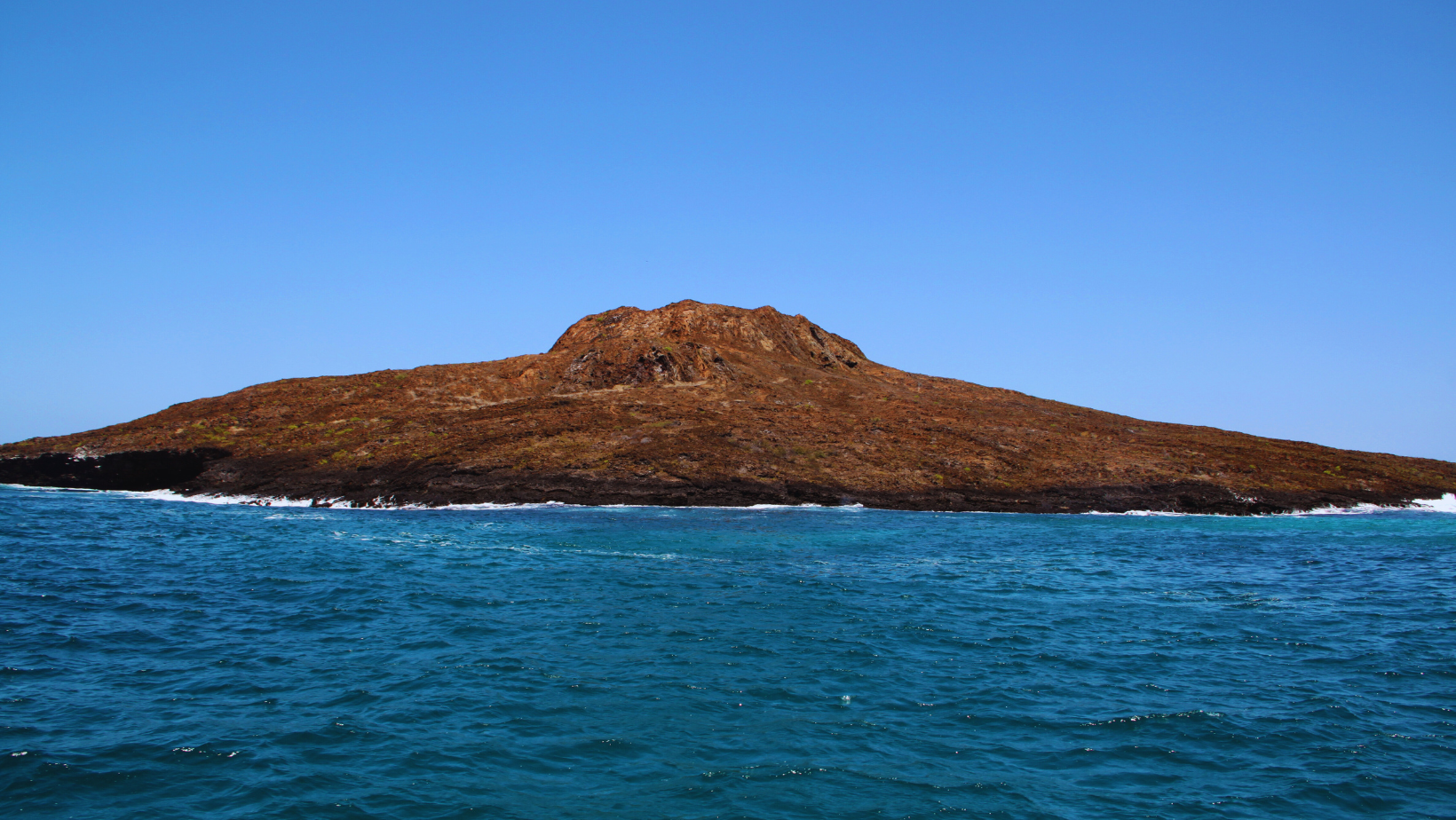
Sombrero Chino or “Chinese Hat” is an islet accessible by a daily excursion or via some naturalist cruise itineraries. It is an inactive volcanic islet, located near the island of Santiago, which has a particular shape that resembles a traditional Chinese hat, hence its name. Landing on its pristine white sand beach, after two hours of navigation from the Itabaca Channel, you will enter a world of spectacular contrasts. You’ll explore rugged lava formations, creating an otherworldly backdrop. The landscape here is not only unique; it is stunningly beautiful, with a mixture of hard lava flows contrasting with the soft, welcoming sand of the islet. Prepare to meet Galapagos sea lions, which often grace the beaches of Sombrero Chino. We also recommend keeping your eyes opened for the iconic marine iguanas sunbathing. Sometimes, with a little luck, you can spot the majestic Galapagos hawk, a true symbol of the wild spirit of the archipelago ! The waters surrounding Sombrero Chino are also home to fascinating marine life, including a wide variety of fish, shark and, occasionally, stingrays and penguins. As part of an excursion, you will probably then take a Zodiac ride along the coast of the neighboring island of Santiago where you may have the opportunity to see penguins. The snorkeling experience off the coast of Santiago is an underwater spectacle not to be missed!


Playa Garrapatero, located on the east coast of Santa Cruz Island, is known for its natural beauty and serenity. This beach offers a stretch of soft white sand, bordered by crystal clear turquoise waters. The natural environment includes a nearby freshwater lagoon, surrounded by mangroves and giant cacti, where you can spot flamingos and other migratory birds.
Playa Garrapatero is a great place to swim, snorkel, and picnic in its designated areas. The beach is relatively less crowded than other beaches on the island, making for a quieter and more secluded experience. To get there, you can take a taxi from Puerto Ayora, then walk a well-marked path for about 15 minutes from the parking lot to the beach.


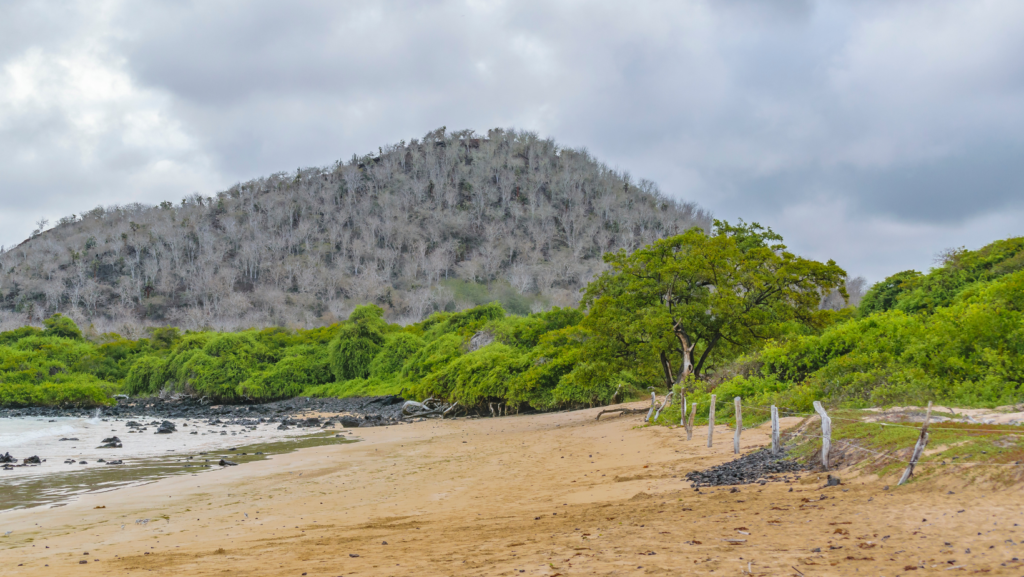


Playa de los Alemanes, located on Santa Cruz Island, is a picturesque and tranquil beach known for its white sand and crystal clear waters. Surrounded by mangroves and tropical vegetation, it is an ideal place for swimming and snorkeling when the conditions are rights. Visitors can observe a variety of marine life, such as tropical fish and occasional reef sharks. The beach is a short water taxi ride from Puerto Ayora, making it easily accessible to tourists. Additionally, there are trails nearby that allow you to explore more of the island’s natural landscape.
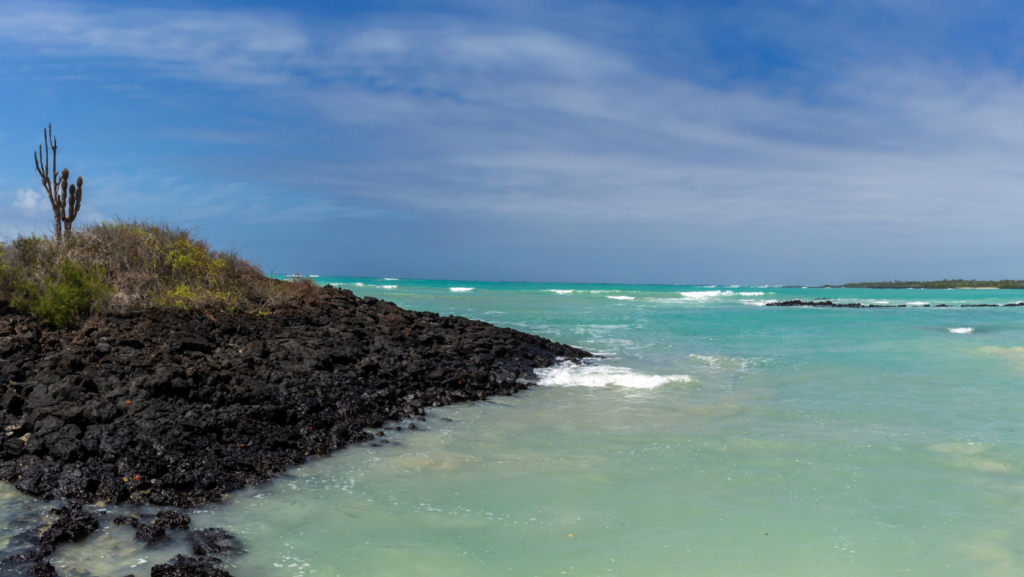

This island with its emblematic pinnacle is located in the northwest of Santa Cruz. Here you will have the opportunity to see one of the most beautiful landscapes in the Galapagos Islands while learning about the volcanic origins of the islands. Arriving in Bartolome, you will begin the walk along a path that will take you to the top of the island, through its 395 steps that end with a spectacular panoramic view of the island and its pinnacle. During the walk you will observe small lava tubes which are the product of the last eruption and where endemic vegetation such as lava cacti and tiquilla plants grow, usually surrounded by Darwin’s finches. Did you know that Pinnacle Rock is made of volcanic ash?
After the walk and having been impressed by the view from this point, you will enjoy a zodiac ride along the coast where, with a little luck, you will be able to spot the Galapagos penguin.
Dive site
The underwater Bartholome formations offer a bottom starting at 45 feet (15 m), followed by a wall disappearing into the depths. This is a good place to observe different species of sharks and other pelagic species. This dive site is rarely visited by diving cruises and daily diving excursion. Several species of fish can be observed at this site and, looking out to sea, it may be possible to observe hammerhead sharks, Galapagos sharks or manta rays.
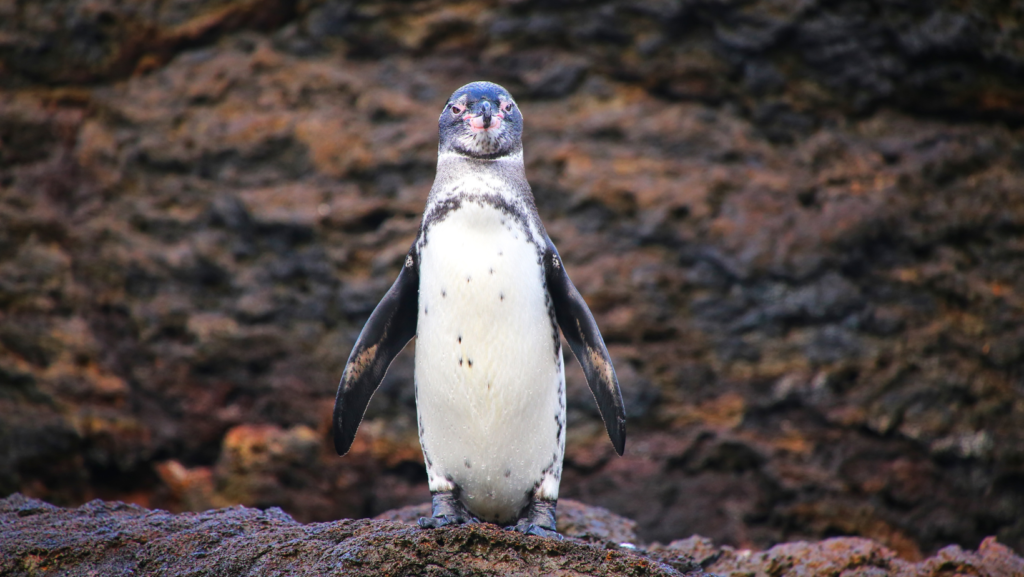
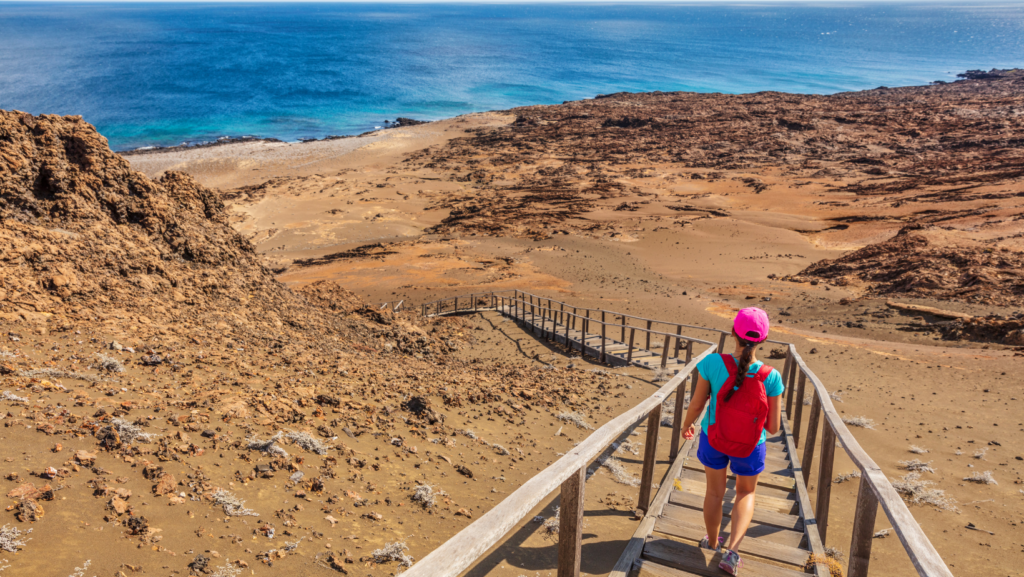

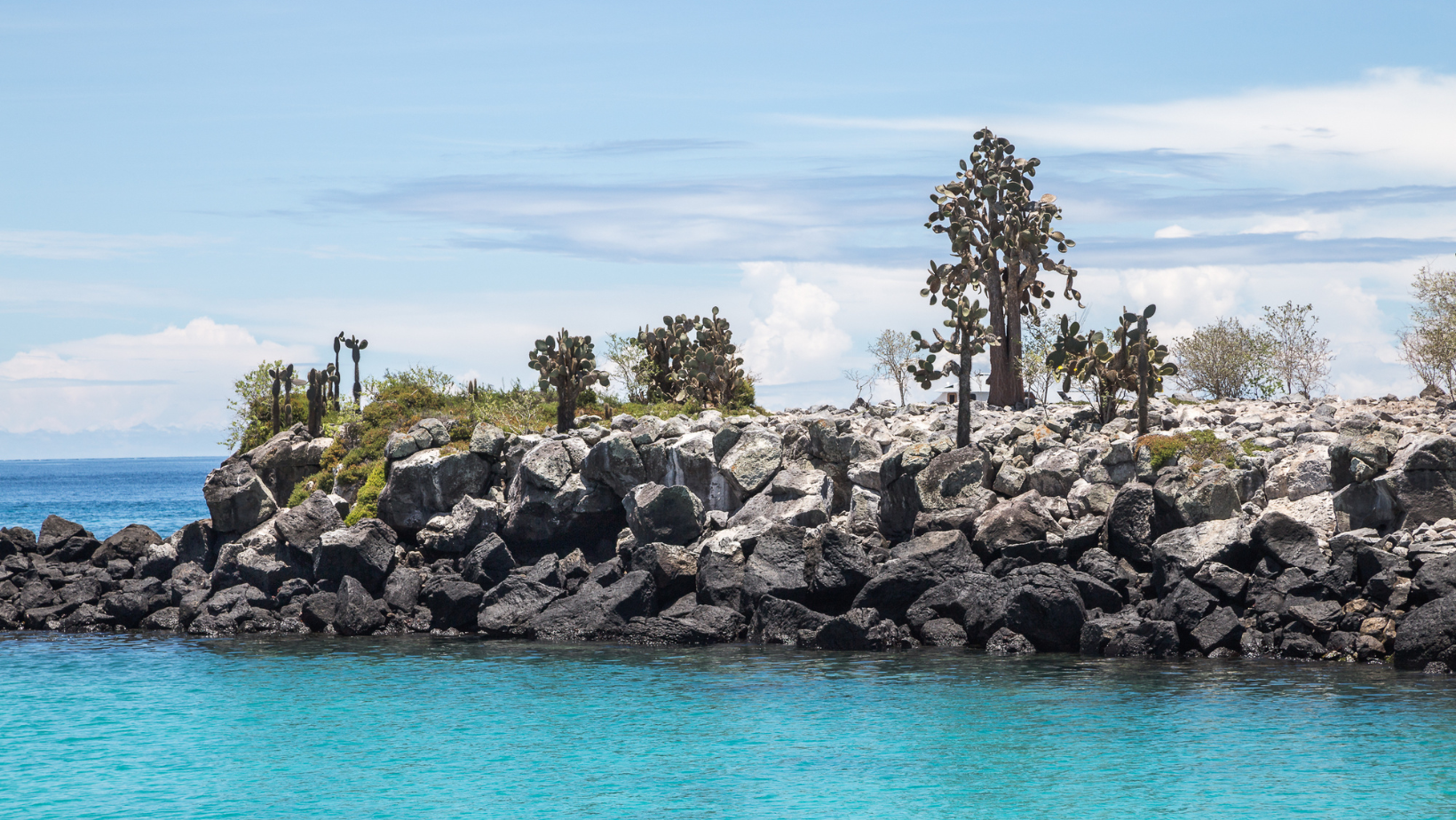
Did you know that the island of Santa Fe is one of the oldest in the entire Galapagos archipelago ? Santa Fe has underwater rock formations dating back approximately 4 million years. Its relatively flat surface is the result of tectonic uplift. In Santa Fe you will find one of the most iconic endemic species of the Galapagos : the Santa Fe land iguana. A very characteristic iguana due to its yellowish color. Another endemic specie to this island is the Santa Fe rice rat, but don’t worry, it can only be seen at night.
During this day you will also be able to observe the largest species of opuntia cactus and the Galapagos hawk (the largest predator on the island), the blue-footed booby, the Galapagos sea lion, frigate birds (royal and magnificent) and the marine iguana. Once the walk is finished, you can swim in the Encañada, where it is also possible to snorkel with sea turtles, rays, sea lions and colorful fish while swimming in the warm and crystal clear waters of this island.
Dive site
The island of Santa Fe offers several sites for scuba diving. The first site is called the Punta and is composed of a pinnacle, the underwater floor of which is composed of stacked rocks forming a downward slope to a sandy bottom at approximately 91 feet (28 m). The second site, La Cueva, is also made up of rocks, with a network of “swim throughs” allowing you to have fun. Around Santa Fe, it is possible to observe a wide diversity of colorful fish, sea lions, red-lipped batfish and white-tip sharks. This island is only visited by daily trips from Santa Cruz. No diving cruise stops here.

Dive site
This site is located on the south side of Santa Cruz Island, a few kilometers from the town of Puerto Ayora. This site is accessible for scuba diving or snorkeling. This is a site where you are almost guaranteed to see feeding marine iguanas and schools of colorful fish. The best time to see them is between 11:00 a.m. and 1:00 p.m., where they usually come out to feed. The site has a maximum depth of approximately 40 feet (11 m).

This island is located in the east of Santa Cruz Island and is characterized by its incredible landscape. The tour begins with a walk on a trail through a forest of Opuntia cacti. You will also have to be careful where you step, because this island is home to a large number of land iguanas, the smallest in the archipelago!
On your walk you will also follow windy cliffs where you can spot red-billed tropical birds, swallow-tailed gulls, brown pelicans and the occasional frigate bird. The trail winds along the edge of the cliff for a few hundred meters. You will also come across the famous “single sea lion colony” : a heterogeneous collection of male sea lions, most of them old, who have lost their territories. Amazingly, they climb the cliff via rock steps. You can visit this island with a day tour from Santa Cruz and on some naturalist cruises.
Dive Site – Anchorage
This site is a shallow site, with a maximum depth of 25 feet (8 m) where it is possible to dive with young sea lions. This site is not very popular and visiting is sometimes prohibited when there are too many sea lions. This is a site where snorkeling and scuba diving are permitted.

Punta Pitt is located on the northeastern tip of the island of San Cristóbal. This is the only place in the archipelago where it is possible to observe the 3 species of boobies present in the Galapagos. The seafloor is composed of a mixture of volcanic rock, sandy bottom and small islets of coral reef. It is possible to do snorkeling and scuba diving. This site can be visited by a day trip from San Cristobal or on certain naturalist cruise itineraries.
Dive site
This is a good place to dive with sea lions, different species of rays, sharks and reef fish. The maximum depth of the sites is approximately 75 feet (23 m). Given the proximity of the rocky cliffs of the point, swell is often felt at the different places. This site is only dived by day trips. No diving cruise pass through this site.


